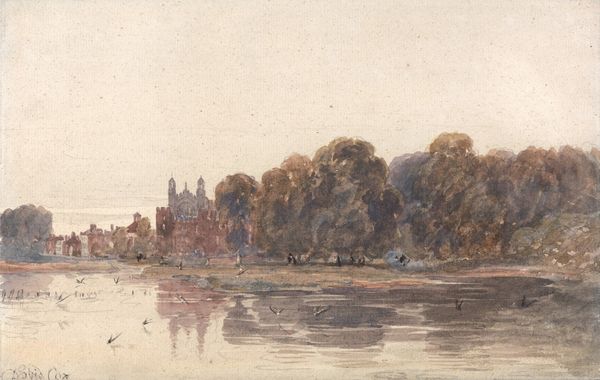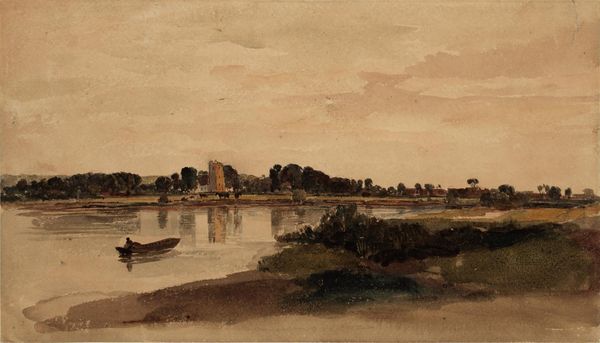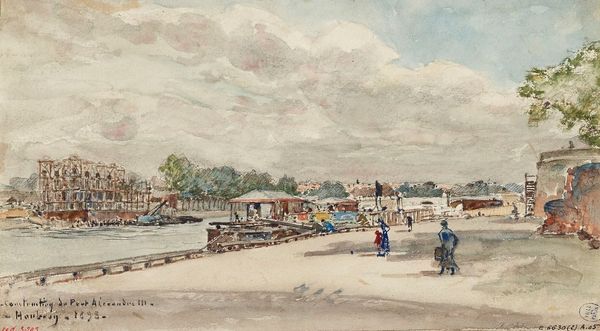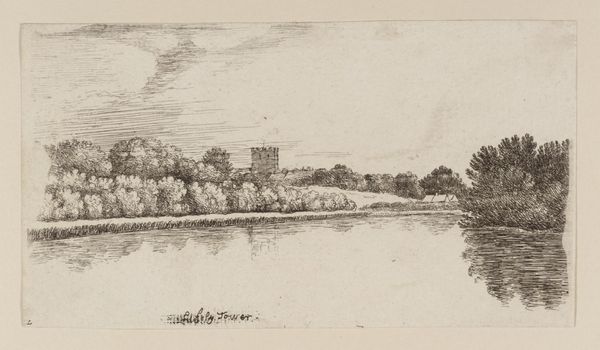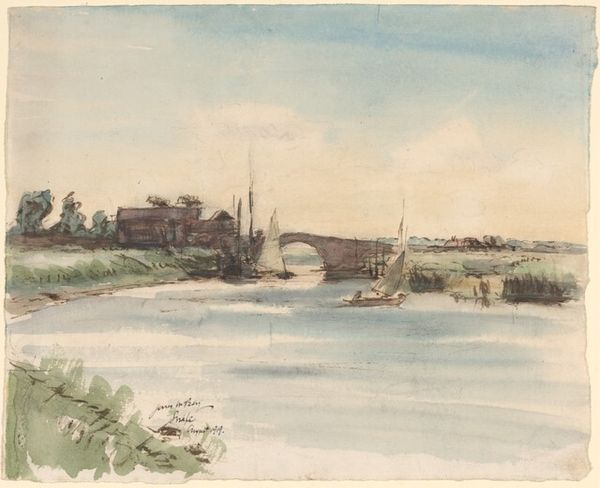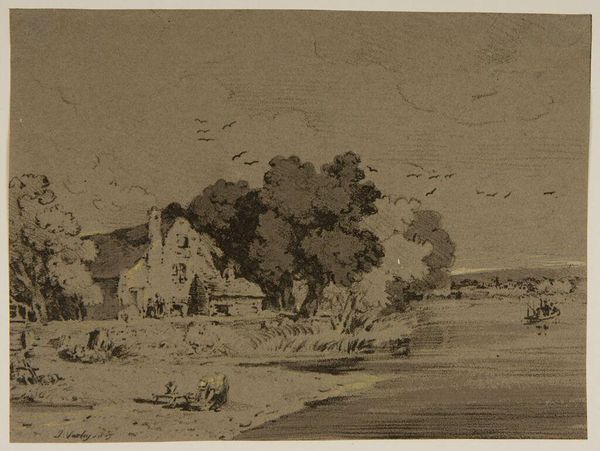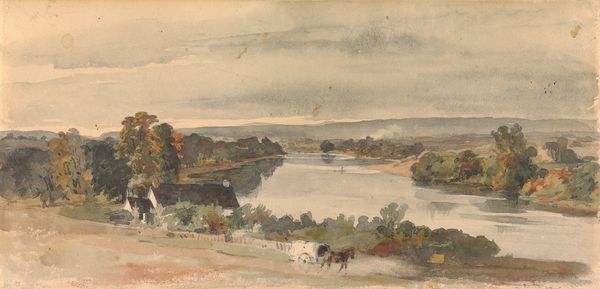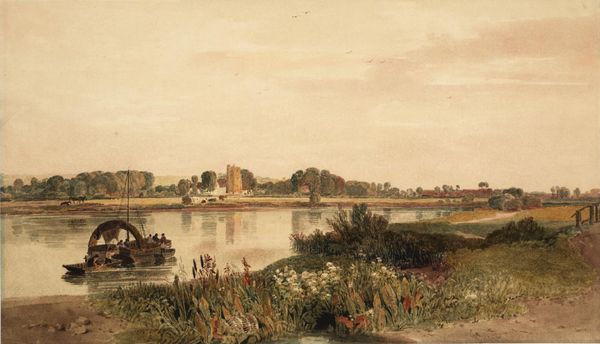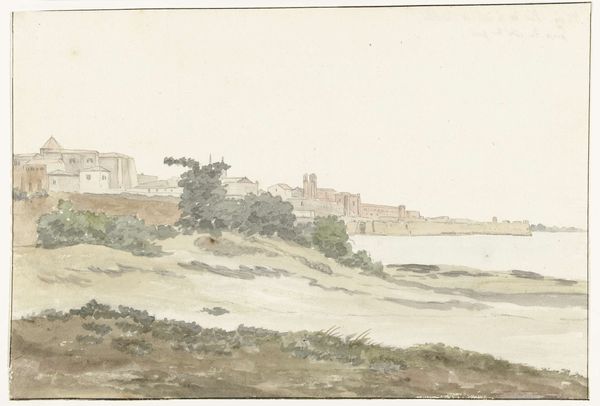
plein-air, watercolor
#
impressionism
#
plein-air
#
landscape
#
oil painting
#
watercolor
#
cityscape
#
watercolour illustration
#
watercolor
Copyright: Public Domain: Artvee
Curator: Let’s discuss Camille Pissarro’s “Kensington Gardens, London,” painted around 1890. It's a watercolour, rendered in his distinct Impressionist style. Editor: Immediately, I’m struck by the washes of muted color. It has a somewhat unfinished quality, yet manages to capture a distinct atmosphere of tranquility. Curator: Indeed, and it's worth considering the period when it was painted. Pissarro lived in London at various times, seeking refuge during the Franco-Prussian War, for instance, a historical context inevitably coloring his urban landscapes. His decision to render Kensington Gardens reflects the park's evolution into a public space frequented by diverse social classes, making it accessible to the urban working and middle class. Editor: I'm noticing the interplay of light and shadow across the facade of the central building. The repetition of geometric forms--rectangles and curves--gives the whole scene a carefully balanced, almost classical feel beneath its surface of spontaneity. How do you interpret this seeming contradiction? Curator: I'd argue that Pissarro uses Impressionism to, as many landscape artists do, examine the intersection of humans with a controlled version of "nature." Here in London’s upper class playground, we see many small groupings of women interacting; however, these are faceless silhouettes. One could ask, how accessible was this urban park to a refugee artist, painting among the very empire who perpetuated war? What is not represented, what can’t be? Editor: An interesting perspective. Looking at the work again, one could also analyze how the loose application of watercolor defines space; it almost seems to dissolve architectural weight and blend social hierarchies. Curator: It raises questions about spectatorship and representation during this era of industrial growth and increased social inequality. Editor: I’m persuaded. Examining how social stratification functions within these visual choices illuminates this artwork in a new light. Curator: Agreed. It demonstrates that a seemingly simple landscape painting, through the appropriate historical lens, is not only an interesting arrangement of shapes and tones, but prompts consideration about empire, gender, and the act of seeing in the Victorian period.
Comments
No comments
Be the first to comment and join the conversation on the ultimate creative platform.
